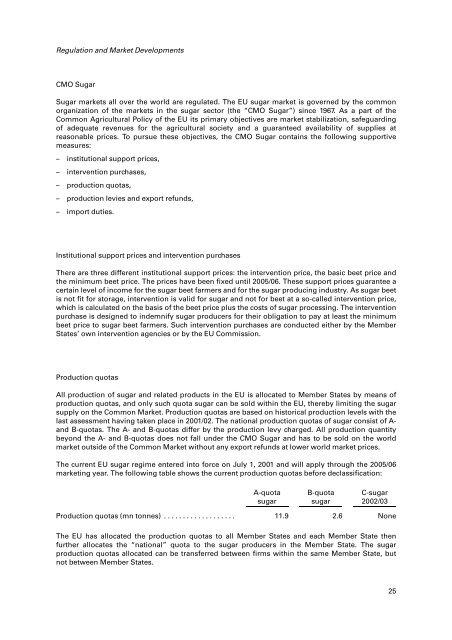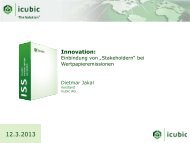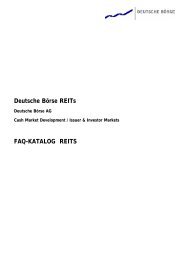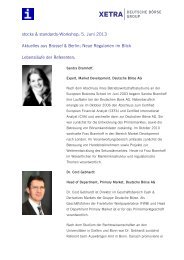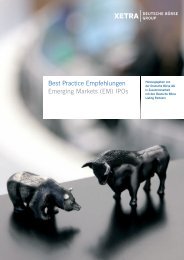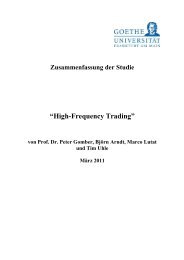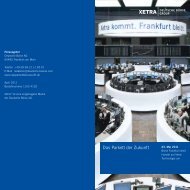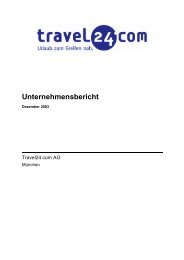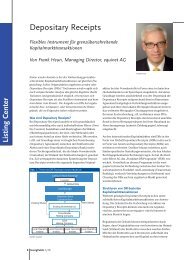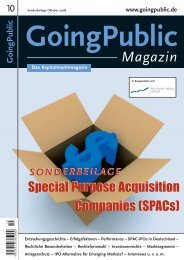Südzucker International Finance B. V. Südzucker AG ... - Xetra
Südzucker International Finance B. V. Südzucker AG ... - Xetra
Südzucker International Finance B. V. Südzucker AG ... - Xetra
You also want an ePaper? Increase the reach of your titles
YUMPU automatically turns print PDFs into web optimized ePapers that Google loves.
Regulation and Market DevelopmentsCMO SugarSugar markets all over the world are regulated. The EU sugar market is governed by the commonorganization of the markets in the sugar sector (the “CMO Sugar”) since 1967. As a part of theCommon Agricultural Policy of the EU its primary objectives are market stabilization, safeguardingof adequate revenues for the agricultural society and a guaranteed availability of supplies atreasonable prices. To pursue these objectives, the CMO Sugar contains the following supportivemeasures:– institutional support prices,– intervention purchases,– production quotas,– production levies and export refunds,– import duties.Institutional support prices and intervention purchasesThere are three different institutional support prices: the intervention price, the basic beet price andthe minimum beet price. The prices have been fixed until 2005/06. These support prices guarantee acertain level of income for the sugar beet farmers and for the sugar producing industry. As sugar beetis not fit for storage, intervention is valid for sugar and not for beet at a so-called intervention price,which is calculated on the basis of the beet price plus the costs of sugar processing. The interventionpurchase is designed to indemnify sugar producers for their obligation to pay at least the minimumbeet price to sugar beet farmers. Such intervention purchases are conducted either by the MemberStates’ own intervention agencies or by the EU Commission.Production quotasAll production of sugar and related products in the EU is allocated to Member States by means ofproduction quotas, and only such quota sugar can be sold within the EU, thereby limiting the sugarsupply on the Common Market. Production quotas are based on historical production levels with thelast assessment having taken place in 2001/02. The national production quotas of sugar consist of A-and B-quotas. The A- and B-quotas differ by the production levy charged. All production quantitybeyond the A- and B-quotas does not fall under the CMO Sugar and has to be sold on the worldmarket outside of the Common Market without any export refunds at lower world market prices.The current EU sugar regime entered into force on July 1, 2001 and will apply through the 2005/06marketing year. The following table shows the current production quotas before declassification:A-quotasugarB-quotasugarC-sugar2002/03Production quotas (mn tonnes) . . . . . . . . . . . . . . . . . . . 11.9 2.6 NoneThe EU has allocated the production quotas to all Member States and each Member State thenfurther allocates the “national” quota to the sugar producers in the Member State. The sugarproduction quotas allocated can be transferred between firms within the same Member State, butnot between Member States.25


